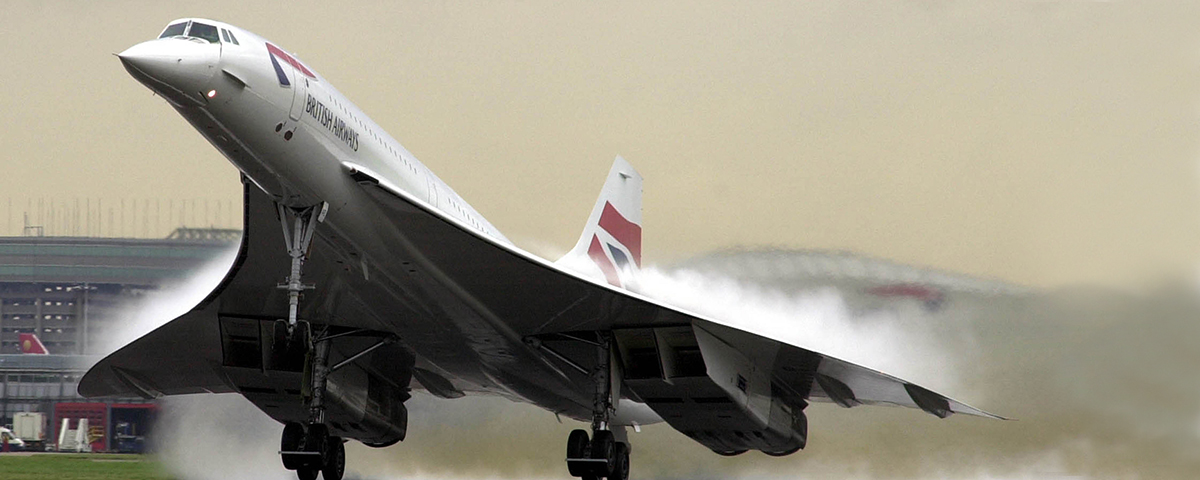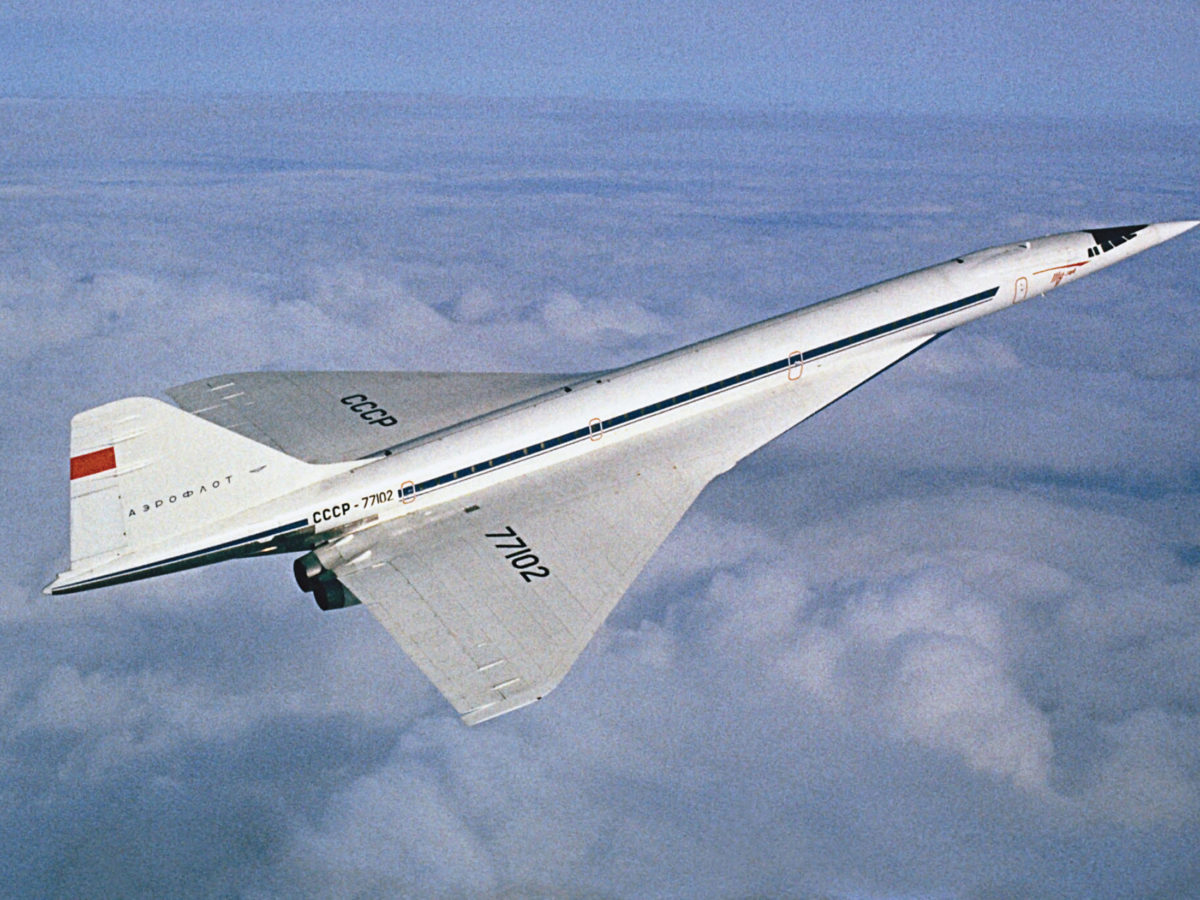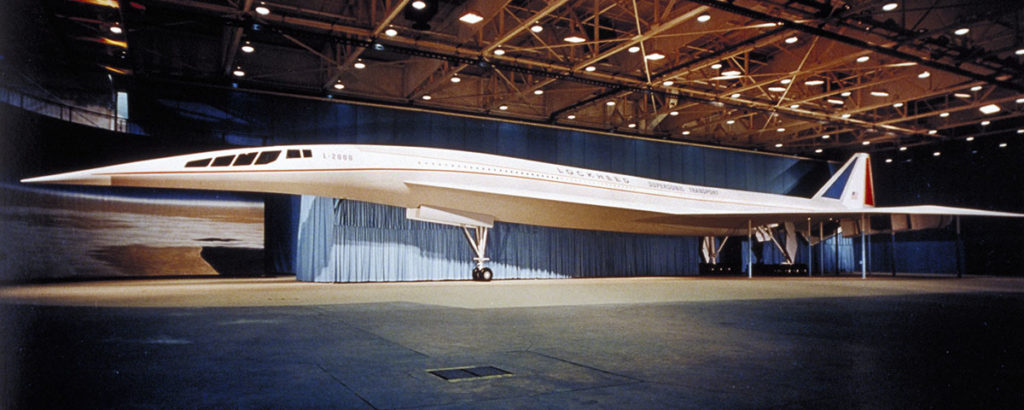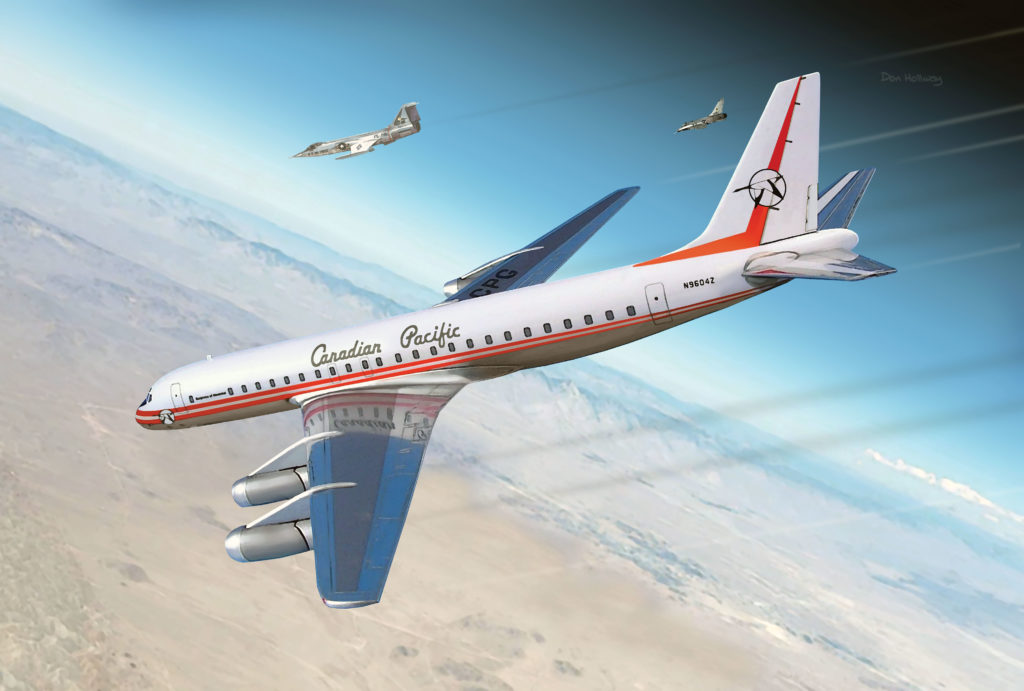The Anglo-French Concorde supersonic transport (SST) is an airplane of singular grace and elegance. It seems to have come from a future where the aircraft has been perfected. Yet it was retired after a quarter-century of service, and no SST has flown since. What’s the story behind the rise and fall of this unique airplane?
In the 1950s, the leading aviation nations sought to develop aircraft with increasing supersonic speeds. In Britain in 1956, airplane and engine manufacturers, the central aircraft research organization and the government established the Supersonic Transport Aircraft Committee to examine the possibilities. By the early 1960s, studies led to the British Aircraft Corporation (BAC) Bristol 223 concept with a delta wing and no horizontal stabilizer. But to produce such an SST, Britain realized it needed to collaborate with another country.
France had developed the Sud Aviation Super Caravelle SST concept, similar in configuration to the Bristol 223, and was a natural partner. The 223 boasted a much longer range, and was the only one of the two able to cross the Atlantic. Britain and France thus sought to jointly develop both medium- and long-range versions of a supersonic transport, and in November 1962 signed a treaty to collaborate on SST development.
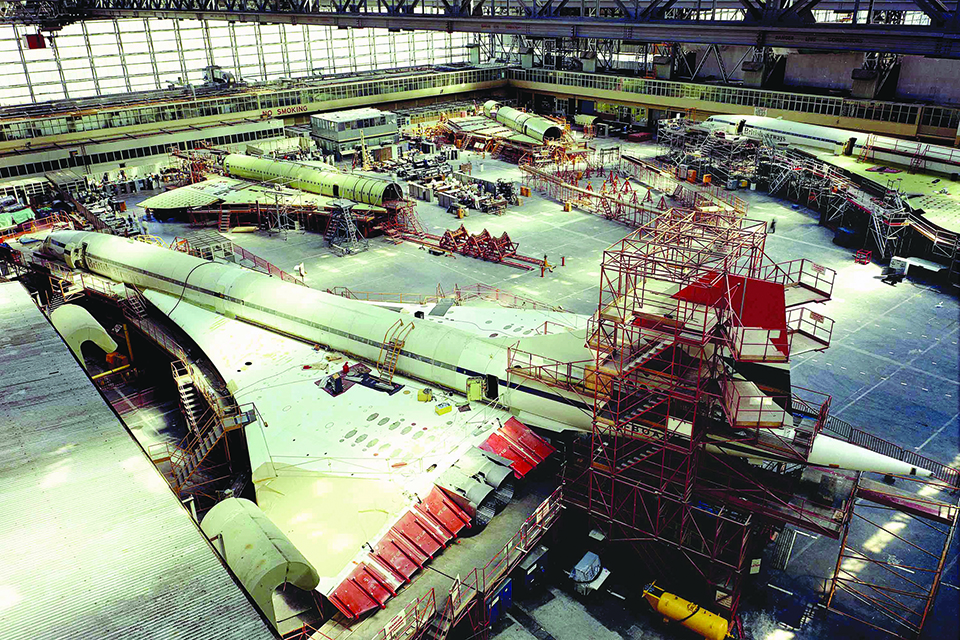
BAC and Sud, which later became part of Aérospatiale, would produce the airframe; Britain’s Bristol Siddeley, which later became part of Rolls-Royce, and France’s Société Nationale d’Études et de Construction de Moteurs d’Aviation (SNECMA) would produce the engine. The two countries would equally share overall responsibility for the project. Such collaboration inevitably poses challenges when language and culture differ and the object is one of national pride and prestige. One example was the use of different measurements—English and metric—by the two industries. This was solved by allowing each country to continue using its accustomed system. Another example was the naming of the aircraft. “Concorde” was agreed upon, and although the British preferred to omit the “e” ending, it was eventually accepted.
A Technological Marvel
Concorde would retain the tailless-delta configuration of the Bristol 223 and Super Caravelle. Its long, dart-like fuselage and slender delta wing would produce minimal drag in supersonic flight, yet allow easy control during takeoff, landing and general subsonic flight.
The aircraft’s optimal cruising speed—originally set at Mach 2.2—was determined by three main factors. The first was the rapid rise in structural temperature in the supersonic range. At Mach 2.2, the temperature was at the acceptable limit for an aluminum structure, with higher speeds requiring the use of stainless steel or titanium alloy.
The second factor was the balance between aerodynamic and propulsive efficiencies as speed changes. Aerodynamic efficiency deteriorates with speed above Mach 0.8, first sharply to Mach 1.4 and then more gradually to Mach 3. The propulsive efficiency of a turbojet, however, improves with speed to beyond Mach 3. As a result, overall efficiency at Mach 2 compares to that at subsonic speed.
Recommended for you
The third factor was that above Mach 2.2 the wingspan needs to be reduced to keep drag low, but doing this impedes low-speed handling. Overall, the Anglo-French team considered that an aircraft faster than Mach 2.2 would take too long and be too costly to develop. Later, due to structural considerations, design speed was reduced to Mach 2.02.
The aircraft’s ogival delta wing was flight-tested in scaled-down form on the specially modified BAC 221 research aircraft. The relatively high temperatures encountered meant that the deformation of metal due to mechanical loading at high temperature—“creep”—had to be considered. To address this challenge, engineers employed creep-resistant copper-based aluminum alloy originally developed for gas-turbine blades. They also used small amounts of titanium and stainless steel and chromium-nickel alloy for the engine bays, flight deck glazing and cabin windows.
The propulsion system would have to produce thrust for more than two hours of continuous supersonic flight, and function in subsonic and transonic flight—a daunting challenge because engine airflow requirements vary greatly across this speed range. The Bristol Siddeley Olympus engine was chosen as the baseline as early as the November 1962 treaty. The Olympus’ first production mark had entered British military service in 1956 on the subsonic Avro Vulcan bomber. By 1962, an afterburning supersonic version was being developed for the BAC TSR-2 bomber, and this would be the basis for Concorde’s four Olympus 593s, mounted in underwing pairs.
A crucial design requirement for the Concorde engine was that the air passing through it had to be subsonic, even when the aircraft was traveling supersonically. Therefore a complex system to adjust air at the intake was designed, comprising variable intake ramps, an auxiliary inlet door, secondary air doors and a ground running flap. Furthermore, air leaving the engine was channeled through primary and secondary nozzles. At takeoff, the intake ramps and auxiliary inlet door were fully opened to permit maximum airflow. With afterburner off and engine power reduced after takeoff, noise abatement was facilitated by opening the secondary air doors to allow engine bypass air and by further opening the secondary nozzles. At supersonic speed, the air to the engine was kept subsonic by lowering the intake ramps; this created shockwaves that reduced intake airspeed.
Another challenge for an SST was the relationship between the aerodynamic center—the point along the fuselage through which lift acts—and the center of gravity. The correct relationship between both centers must be kept throughout flight. On Concorde, from subsonic to supersonic speed, the aerodynamic center moves significantly aft. The aircraft was therefore fitted with forward and aft fuel tanks that received fuel from the main tanks as required to adjust the center of gravity in accordance with the movement of the aerodynamic center.
High Speed Challenges
Delta aircraft have steep landing and takeoff angles of attack, and high-speed deltas typically have long, tapered noses, which impede the downward view. To improve the pilot’s view, Concorde’s nose could droop downward for takeoff and landing—5 degrees and 12.5 degrees, respectively. The droop nose had been pioneered on Britain’s Mach 1.73 Fairey Delta 2 research aircraft, which preceded the BAC 221.
A glazed upper section, the visor, protected the cockpit windows against heat and air pressure. Independently adjustable, the visor was raised during supersonic cruise.
The two Concorde versions were to have the same dimensions, but the medium-range version would have 100 seats and the long-range version 90. The British—long-range proponents—thought that such range was necessary to make the SST economically competitive with subsonic aircraft. As the program proceeded, airlines also revealed their preference for long range, so the Concorde team began developing that version first, and ultimately abandoned the medium-range version. The airlines were also interested in greater passenger loads, requiring more power from the engines. This led to the redesigned Olympus 593B, which allowed an increased seating capacity of 118. The modified aircraft design was finalized in early 1965, and construction of two prototype aircraft began later that year.
The first prototype made its maiden flight from Toulouse, France, on March 2, 1969. It was followed by the second from Filton, Bristol, in the UK the next month. The first prototype achieved supersonic flight in October 1969, and both aircraft had reached Mach 2 by November 1970. They were also beginning to embark on sustained Mach 2 cruise, never before undertaken by any aircraft. In July 1972, British Overseas Airways Corporation (BOAC) and Air France between them ordered nine Concordes. The first production aircraft flew in December 1973.
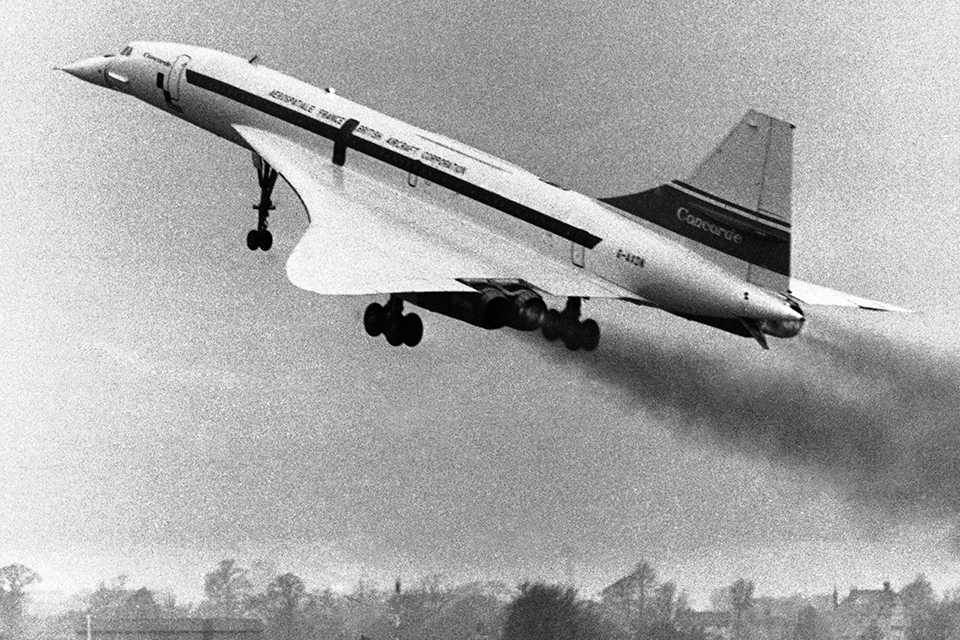
Concorde had made its inaugural trip to the United States in September 1972, flying to Dallas-Fort Worth and then to Dulles International Airport near Washington, D.C. In a spectacular June 1974 demonstration, an Air France Concorde departed Boston for Paris at the same time as an Air France Boeing 747 departed Paris for Boston. The Concorde arrived at Paris, spent 68 minutes on the ground, departed and touched down back at Boston 11 minutes before the 747 arrived.
Unwelcome airports
Commercial service commenced on January 21, 1976, with BOAC-successor British Airways between London and Bahrain, and with Air France between Paris and Rio de Janeiro via Dakar. Concorde’s path to obtaining U.S. flight clearance for airline use was tortuous, however. In December 1975, the House of Representatives had voted for a six-month ban on the aircraft landing in the U.S. due to noise concerns. Nevertheless, approval was granted in February 1976 to British Airways and Air France to operate a limited number of flights on a trial basis to New York and Washington for 16 months. That March, though, the New York Port Authority banned Concorde from landing at its airports. Thus the first scheduled transatlantic passenger flights by British Airways and Air France were only to Washington. They began simultaneously on May 24, when two aircraft flew together over the city and approached and landed on parallel runways at Dulles. Transatlantic service to New York, further delayed by protests about noise, eventually began on November 22, 1977.
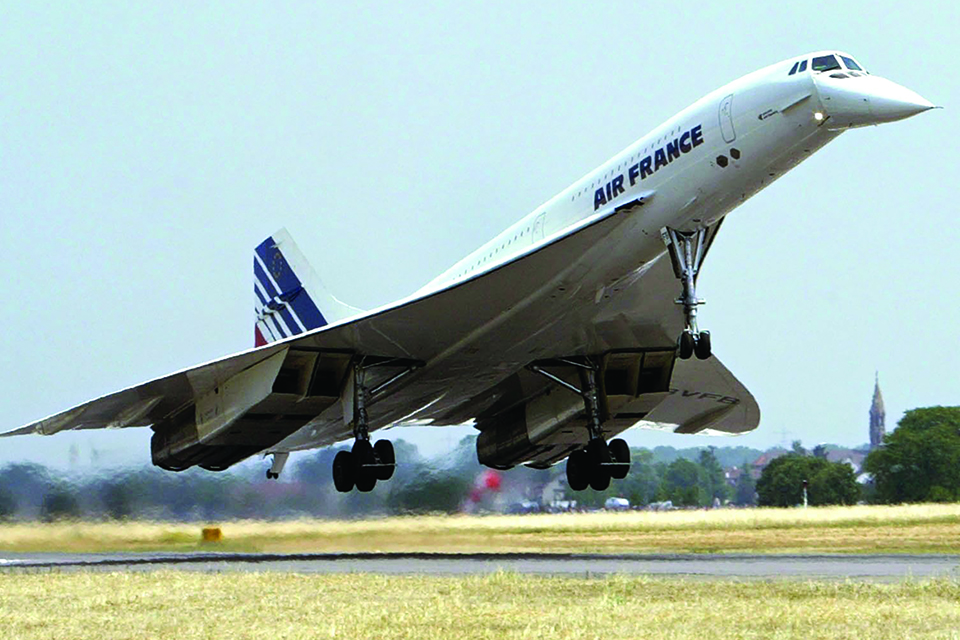
The main Concorde routes over the career of the aircraft were transatlantic, particularly to New York. A Braniff International subsonic service was inaugurated between Washington and Dallas-Fort Worth in January 1979, but was discontinued in June 1980 due to low passenger numbers and high fuel costs. The sonic boom Concorde produced when operating at supersonic speeds forced it to fly overland routes subsonically, rendering the flights inefficient and thus more expensive.
A firey demise or a matter of profit
Only 14 Concordes ever entered service, seven each with British Airways and Air France, and the projected market for the airplane never materialized. By the beginning of the new century, the aircraft was approaching the end of its service life. Then on July 25, 2000, catastrophe struck when an Air France Concorde crashed on takeoff from Paris, killing all 109 people on board and four on the ground. French investigators found that debris from a burst tire had caused a fuel tank to rupture. The tire may have been punctured by a metal strip fallen from the engine on a DC-10 that took off before the Concorde.
As a result, the aircraft’s British and French certificates of airworthiness were revoked, and Concorde was grounded while stronger tires, new fuel tank liners and additional electrical shielding were developed. In September 2001, Britain and France certified the modified aircraft, and both airlines resumed service that November. On April 10, 2003, however, they announced that the last scheduled flight would be made at the end of October. British Airways said the decision was made for commercial reasons.
In the final analysis, Concorde could never be as efficient as the subsonic transports of the time. Its sonic booms, noise and engine emissions gradually became less acceptable in an age of increasing environmental awareness. That Concorde, with technology developed five decades ago, could transport civilian passengers supersonically for a quarter century while attempting to compete economically with subsonic transports is in itself remarkable.
A.R. Prince writes on aircraft technology for international trade publications. Further reading: Concorde: The Rise and Fall of the Supersonic Airliner, by Jonathan Glancey; and Concorde: The Inside Story, by Brian Trubshaw.
This feature appeared in the March 2018 issue of Aviation History. Subscribe here!

